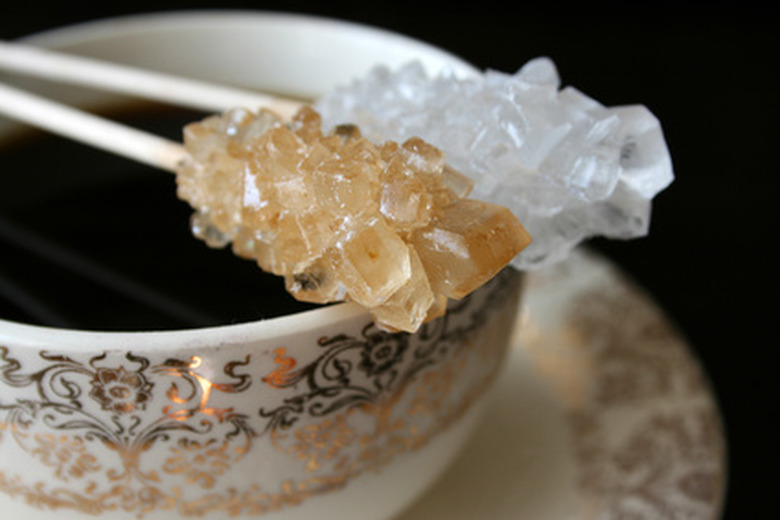The Chemistry Of Rock Candy
Sucrose, or ordinary granulated table sugar, is a universal ingredient in sweets around the world, and folks are generally advised to consume such products in moderation. But this kind of sugar is an extremely versatile substance from the standpoint of culinary (food) chemistry, and the making of candy is arguably a science in itself.
Most people in the Western world of a certain age have probably seen an example of an old confectionery favorite called rock candy. It can be made in any color you like, and all you need is plain sugar, a Bunsen burner or other heat source, a couple of heat-resistant beakers and some plain water.
Rock candy is made by a separation process called crystallization. This involves breaking up a solid, hiding it in tiny pieces among water molecules and then having the solid come back together in a lattice form at the molecular level, producing alluring arrangements at the human visual level and sometimes an edible treat!
The Reactants of Rock Candy Chemistry
The Reactants of Rock Candy Chemistry
Sucrose is a kind of sugar known as a disaccharide, meaning that it is a dimer (a repeating molecular unit with two distinct subunits). The two constituent monosaccharide sugars are glucose and fructose. Glucose is the molecule ultimately extracted from all foodstuffs for use in body cells, where metabolic processes occur.
You will need maybe a liter of plain water as well as a way to heat it to the boiling point. If you want to try this yourself, mix together about 100 mL of water and enough sugar to form a "slurry" (a liquid-like suspension, like a frozen summer fountain drink). Pour this into a larger beaker, stir while heating to the boiling point, remove the container from the heat source and then carefully decant some of the cooling mixture into different beakers. You can add a little food coloring to these if you like.
The Dissolving of Sucrose
The Dissolving of Sucrose
When certain solid substances are placed in a liquid, most often pure water, they are seen to sink to the bottom and remain there; sand is one example. (Liquid is a form of matter with a constant volume that takes the shape of its container.) Others, however, seem to disappear, at least up to a point. One example is table salt (NaCl). This behavior is called dissolving.
When no more of a solute can be dissolved in a given volume of solvent, the solution is said to be saturated, and adding more solute then gives the same result as with sand initially, an accumulation of solute in the bottom of the container. The formation of pure solid particles of a substance from a solution is called precipitation, and the resulting substance is called a precipitate.
Rock Candy Crystallization
Rock Candy Crystallization
As a solvent such as water cools, its molecules move about less rapidly and any solute molecules in the picture are in effect forced back together to form crystals. These tend to "seed" on rough areas of containers or intentionally placed media such as a length of string. If you are making your own candy crystals, do not refrigerate your container(s).
While cooling coaxes some sugar molecules into crystal form, what completes the growth of the crystals is the gradual evaporation of water over a period of perhaps three to five days (depending on how dry the environment is). As the water leaves the mixture as vapor, the volume of water decreases while the mass of sugar remains the same, lowering solubility further and coaxing more rock candy out of the solution.
Cite This Article
MLA
Beck, Kevin. "The Chemistry Of Rock Candy" sciencing.com, https://www.sciencing.com/chemistry-rock-candy-6974858/. 26 March 2020.
APA
Beck, Kevin. (2020, March 26). The Chemistry Of Rock Candy. sciencing.com. Retrieved from https://www.sciencing.com/chemistry-rock-candy-6974858/
Chicago
Beck, Kevin. The Chemistry Of Rock Candy last modified August 30, 2022. https://www.sciencing.com/chemistry-rock-candy-6974858/
